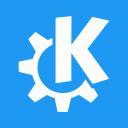Martedì, 9 Dicembre 2025
Martedì, 9 Dicembre 2025. Oggi KDE ha rilasciato un aggiornamento di risoluzione errori per KDE Plasma 6, versione 6.5.4.
Plasma 6.5 è stato rilasciato in ottobre 2025 con molti miglioramenti delle funzionalità e nuovi moduli che completano l'esperienza desktop.
Questo rilascio aggiunge tre settimane di nuove traduzioni e correzioni da parte dei collaboratori di KDE. Le correzioni degli errori sono solitamente piccole ma importanti e includono:
Vedi elenco completo dei cambiamenti